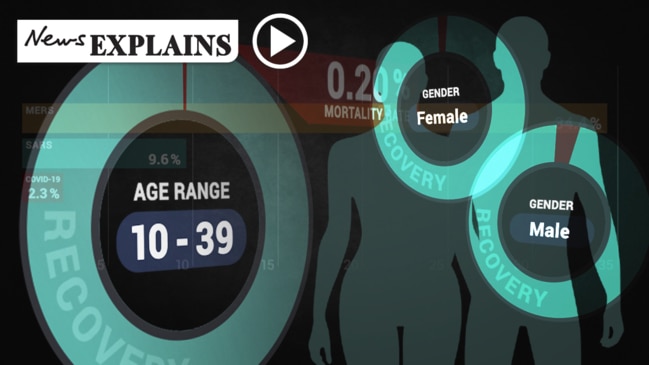What are the symptoms of the killer coronavirus?
As scientists try to understand more about the deadly coronavirus and how it’s spreading, these are the symptoms to look out for.

The rapid spread of the deadly coronavirus has put health authorities on alert and sparked a global panic.
With the virus rapidly jumping borderssince it was first detected in the Chinese city of Wuhan, many countries are now scrambling to prevent the spread by implementing emergency plans and drastic travel restrictions.
Scientists and health experts are working quickly to understand how this new virus, also known as COVID-19, is being transmitted.
“This is a unique virus, with unique features. This virus is not influenza,” said World Health Organisation’s (WHO) director-general Tedros Adhanom Ghebreyesus.
“We are in uncharted territory.”
RELATED: Follow updates on the coronavirus outbreak
The Wuhan coronavirus is part of a family of viruses that originated in animals before being spread to humans. Some coronaviruses that have been found in humans have caused only mild, cold-like symptoms.
But a coronavirus has occasionally been more severe, such in the case of severe acute respiratory syndrome, or SARS, which caused 774 deaths out of 8096 cases worldwide during a 2002/03 outbreak.
The symptoms of the new coronavirus at the centre of the current outbreak range from a mild cough to pneumonia.
Australia’s Department of Health says symptoms include fever, flu-like symptoms such as coughing, sore throat and fatigue, and shortness of breath.
In extreme cases the virus can cause organ failure. However, about 80 per cent of patients only get a mild to moderate form of the disease.
RELATED: Coronavirus is more severe than flu: WHO
Those with higher risk for severe sickness are people aged over 60 and those with
underlying conditions such as hypertension, diabetes, cardiovascular disease, chronic respiratory disease and cancer. Strangely, the virus doesn’t seem to be affecting children, and health experts are still unsure why.
The mortality rate for the new coronavirus is about 3.4 per cent worldwide, according to WHO. That is a preliminary figure as the organisation doesn’t know how many milder cases are going undetected. It also varies from place to place depending on the strength of the local health care systems where outbreaks occur.
By comparison, the SARS outbreak had a death rate of around 10 per cent. The seasonal flu, on the other hand, has a death rate of about 0.1 per cent and claims up to 650,000 deaths globally each year.

Health experts say a vaccine for coronavirus may take a year, or up to 18 months to develop.
The virus can spread through close contact with an infectious person, contact with droplets from an infected person’s cough or sneeze, and touching objects or surfaces that have infected droplets and then touching your mouth or face.
The incubation period can range from a few days to 14 days.
The best ways to prevent catching the virus is by practising good handwashing hygiene, which includes washing hands thoroughly with soap and water or alcohol-based hand sanitiser, and avoiding sneezing or coughing into hands.
There is no specific antiviral treatment for the new coronavirus and people sick with the virus are typically receiving treatment to relieve symptoms.




